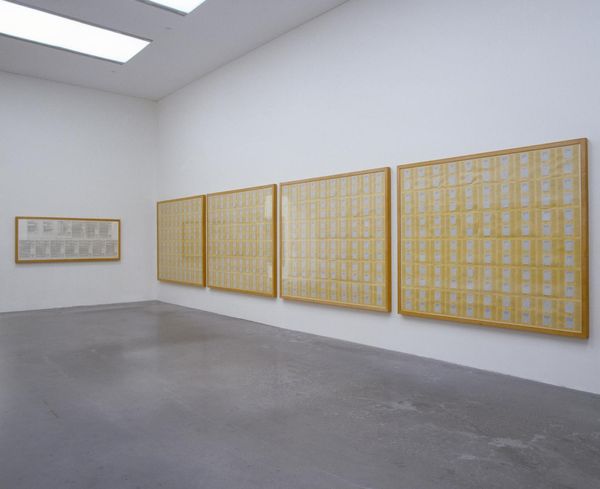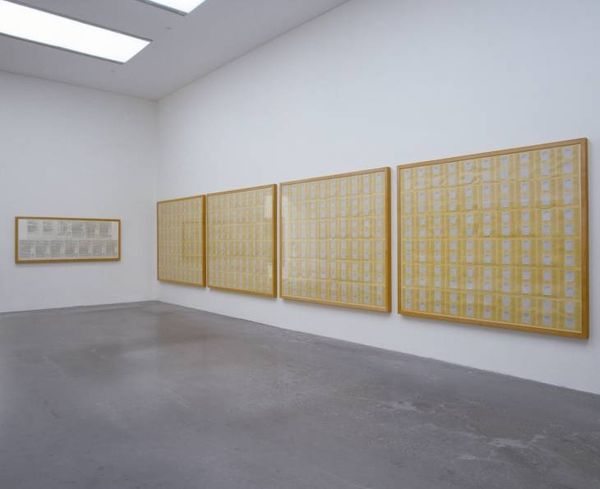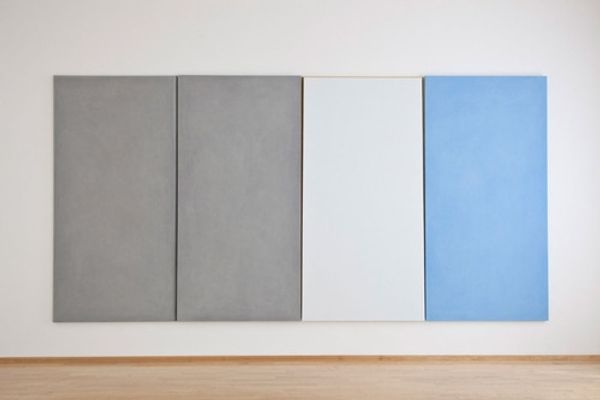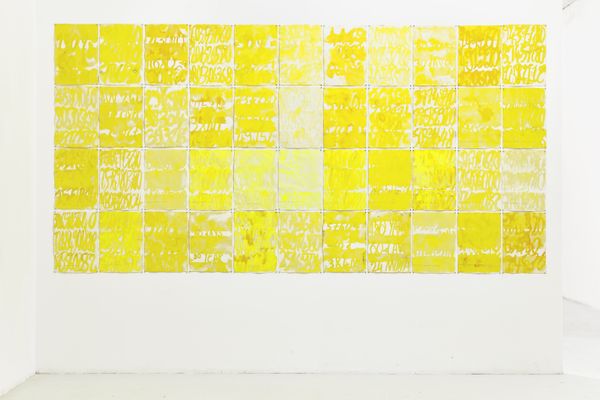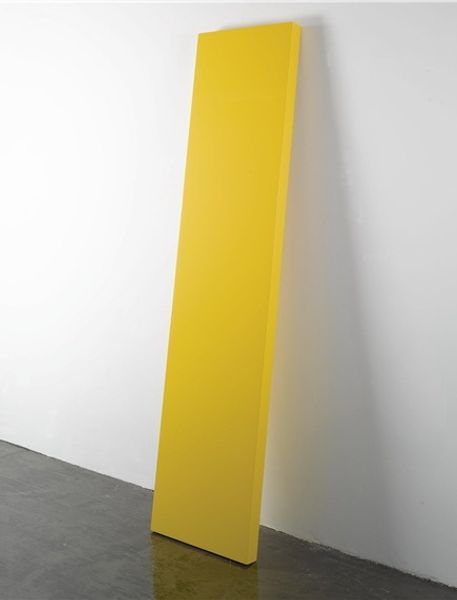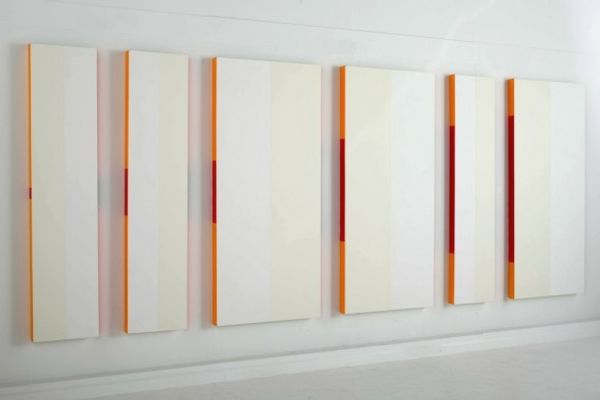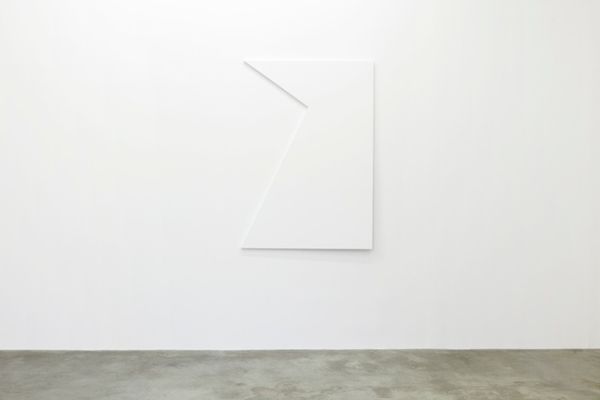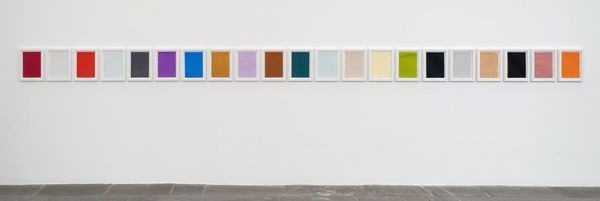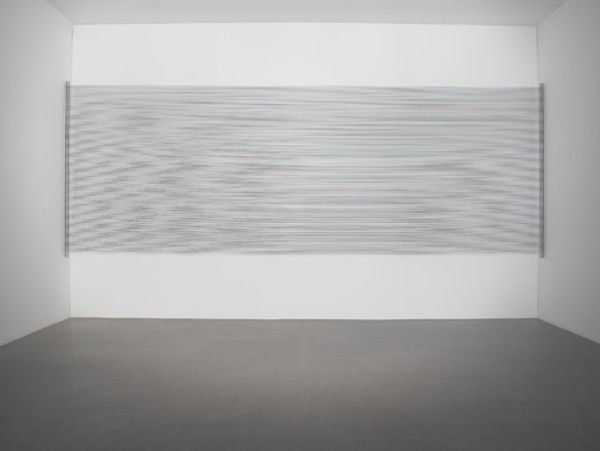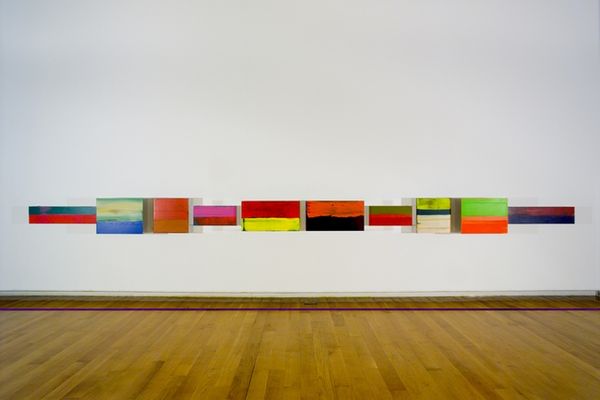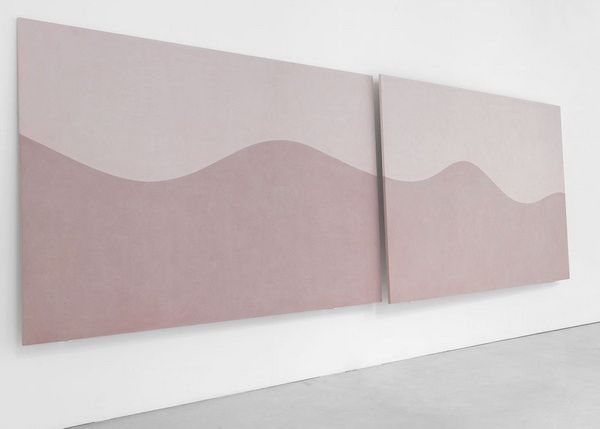
painting, acrylic-paint
#
abstract expressionism
#
painting
#
minimalism
#
acrylic-paint
#
geometric
#
abstraction
#
modernism
#
hard-edge-painting
Copyright: Ettore Spalletti,Fair Use
Curator: This is "Stanza, Giallo Oro," an acrylic painting created by Ettore Spalletti in 1994. Editor: It's…striking. A trio of pale yellow squares hanging flush to the wall. The simplicity is almost disarming, yet there's a tangible calmness about it. Curator: Spalletti's work often explores the intersection of sculpture and painting. Here, the 'stanza,' or room, in the title points towards his interest in how the artwork defines and transforms the space it occupies. Giallo Oro, 'golden yellow', seems apt considering the way this color shifts depending on the ambient light, imbuing the space with a certain glow. We should keep in mind that color, like everything, doesn't exist in a vacuum but in its particular surroundings. Editor: The subtle variation in the tone of the yellow from one square to the next also grabs attention. It avoids pure uniformity and invites your eye to move slowly across the composition. I’m drawn to how the individual panels each assert their discrete physicality while still behaving as parts of the whole, generating a powerful rhythmic sequence. Curator: Considering his roots in the Abruzzo region of Italy, and its deep connection to ancient Mediterranean cultures, there’s an underlying suggestion that these blocks might symbolize altars or other sacred spaces. These works are, above all, attempts at elevating the art object from pure form to instruments of spirituality. Editor: So you’re suggesting these yellows aren't merely surface treatment but, in fact, function like an optical system geared towards producing heightened awareness and encouraging introspection. Curator: Precisely. When placed in conversation with the room, these blocks can take on diverse meanings for varied audiences. Editor: I had originally viewed it through the prism of minimalist hard-edge abstraction and geometric arrangements; that context brings a lot of depth to the work. I suppose this confirms my suspicion that beauty resides in this fascinating relationship between line, color, form, and context. Curator: And in the way this interplay evokes thought and feeling in the viewer. Editor: Absolutely.
Comments
No comments
Be the first to comment and join the conversation on the ultimate creative platform.

